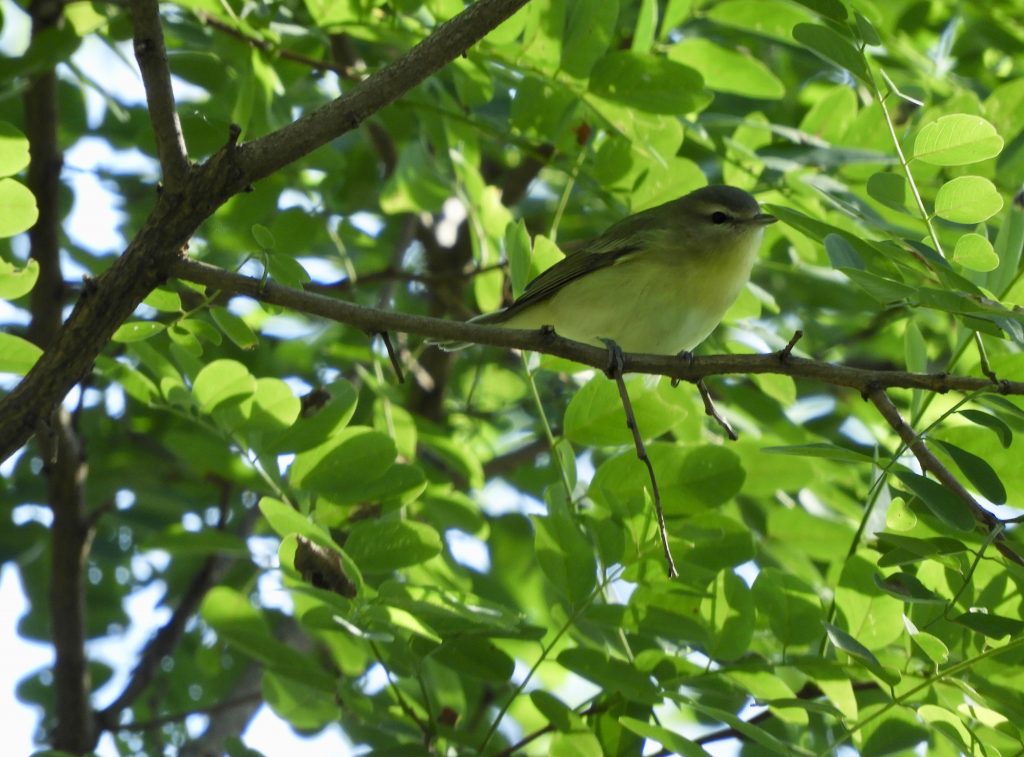
Royal Botanical Gardens’ lands ON. September 19th & 20th 2020. I write this after (and about) two consecutive birding mornings. Cool, almost cold, nights gave way to brilliant blue days. Both mornings I walked transect routes in what felt like the peak of the fall migration. There were many familiars, many happy returnees, several surprises and a few challenges that required after-the-fact photo scrutiny.
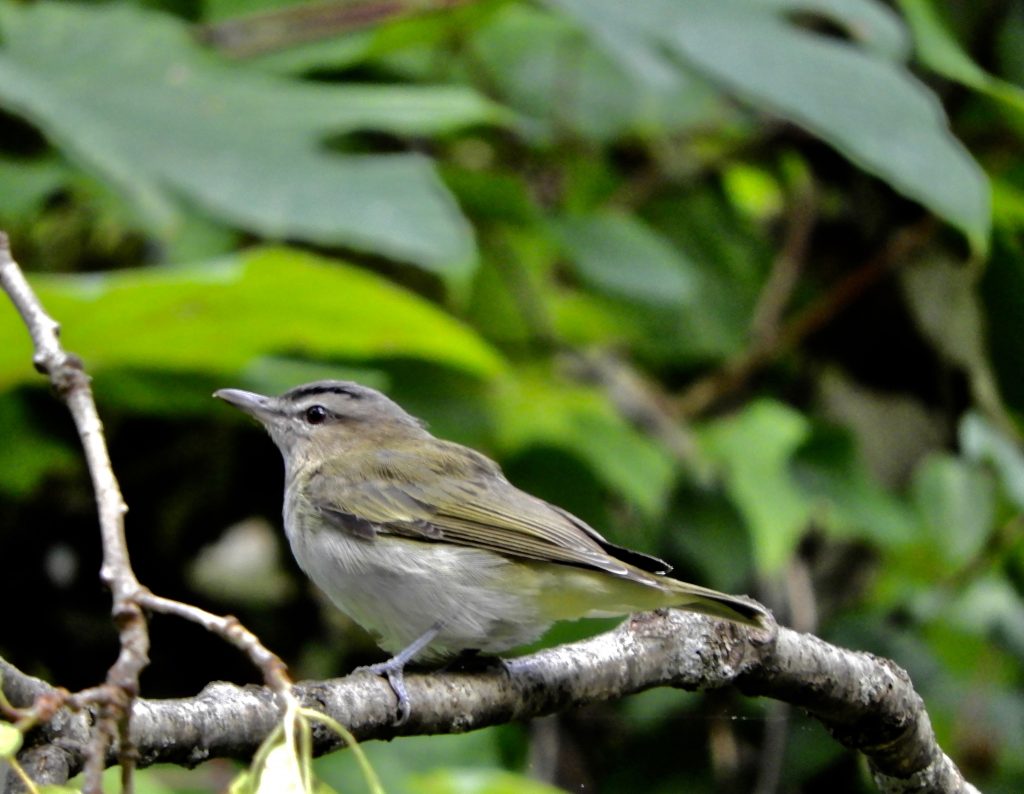
My Birds of Both Days were Vireos. They kept stopping me in my tracks, they have that power: Red-eyed Vireos appearing on strategic branches ; Bright yellow, acrobatic Philadelphia Vireos, flitting and staying just a few yards ahead of me; And Blue–headed Vireos slinking through leafy clusters.
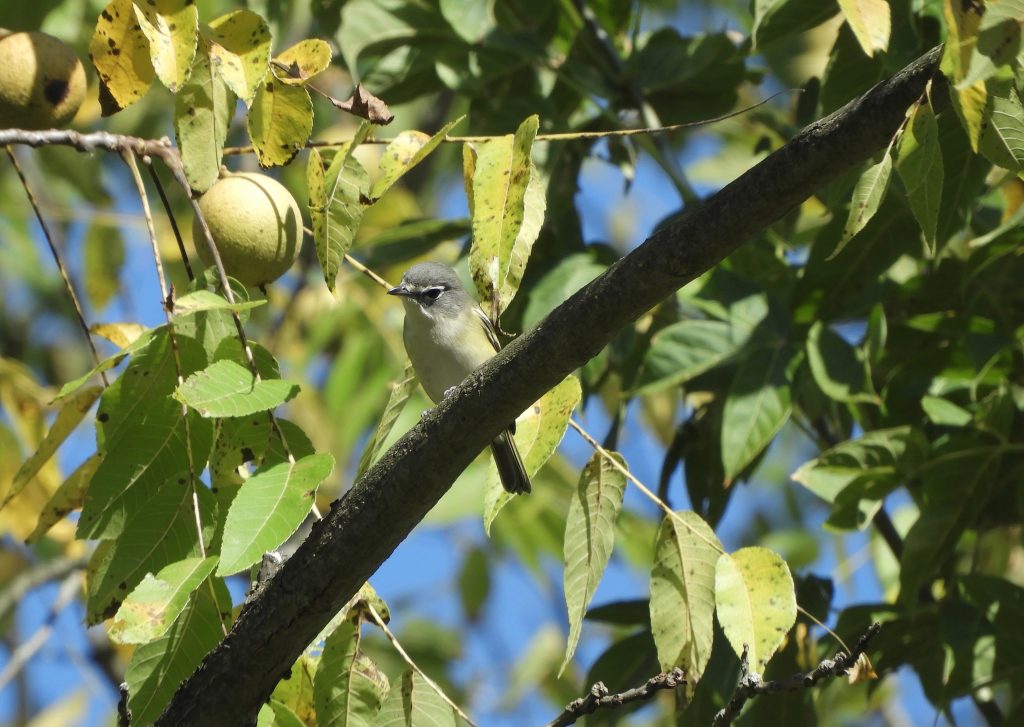
The familiars, some just passing through, others probably here for the winter included Blue Jays in small groups swooping and screeching as they passed overhead; Rose–breasted Grosbeaks now dressed in olive-brown, black and buff; groups of Cedar Waxwings; a pair of Trumpeter Swans here for the winter from points not too far north; and many just-passing-through White–throated Sparrows.
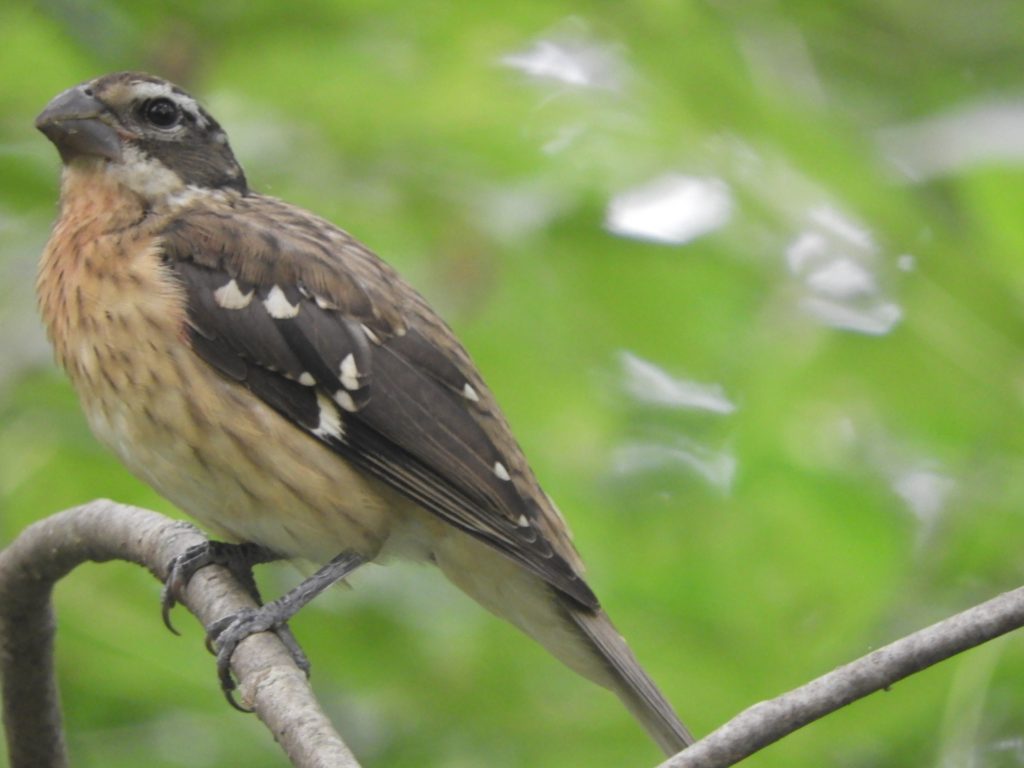
My surprises were: a Black-billed Cuckoo, two early Ruby–crowned Kinglets, a Yellow–bellied sapsucker, two Green–winged Teal and four Northern Pintails.
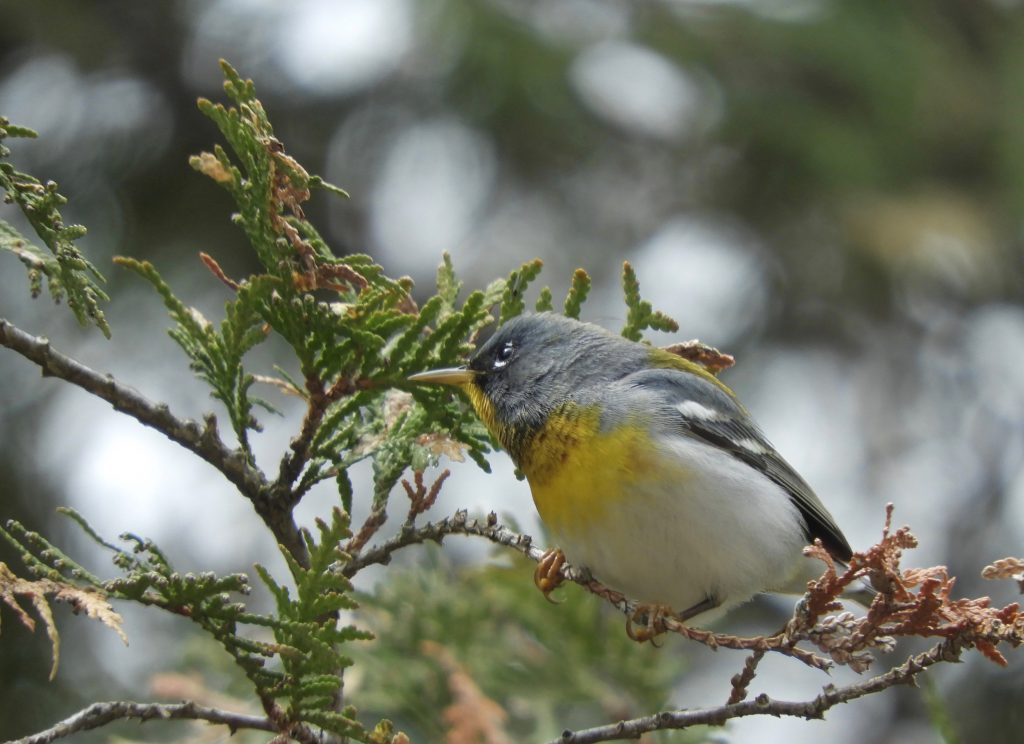
And of course in the sparkling delights category some warblers: Nashville and Tennessee Warblers, American Redstarts, Common Yellowthroats, and a Northern Parula.
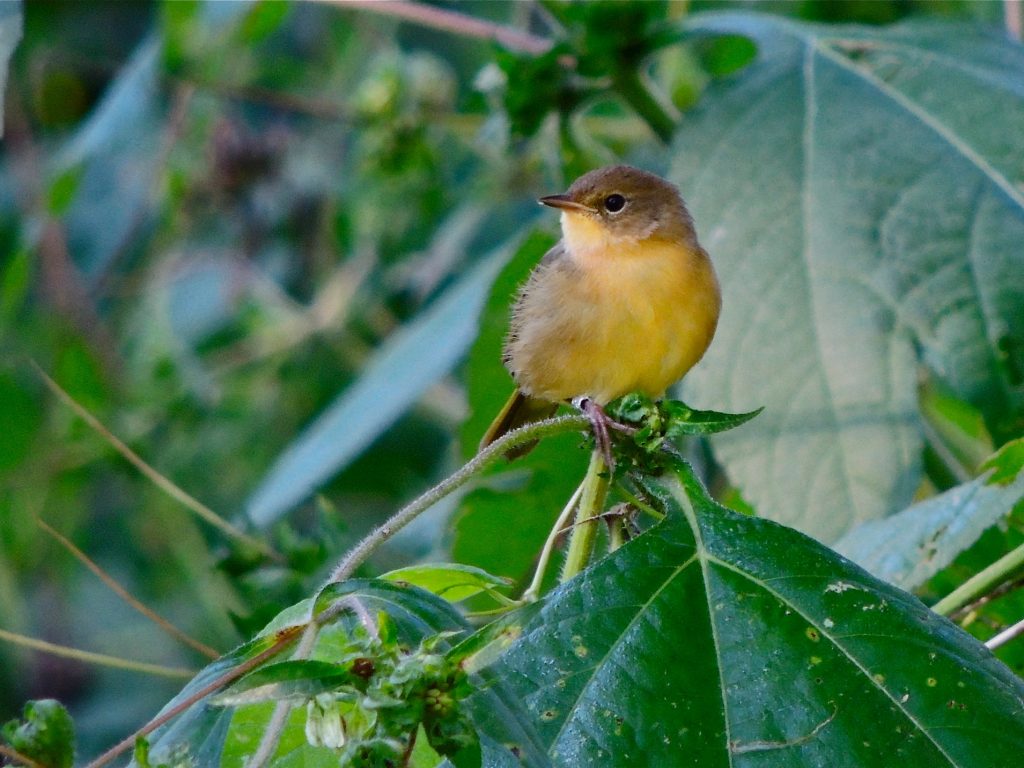
The Green–winged Teals challenged me for a while, I could make them out only as silhouettes against bright reflections, in silhouette they look like mini-Mallards. But I knew, by their size, they had to be Green-wings; they are small, one step smaller than Wood Ducks and two big steps smaller than Mallards. I felt I needed to see a little bit more, enough to clinch the identification, so I watched for a long time and the longer I looked the more I could see behavioural differences. One or two of my photos are persuasive, but it was experience that convinced me.
The Northern Pintails presented another duck challenge. Looking down on them from afar, I saw at once that they were not Mallards, they were longer, greyer and just somehow different. I took many photos and it was only when I could examine the photos in comfort that I realised they were pintails.
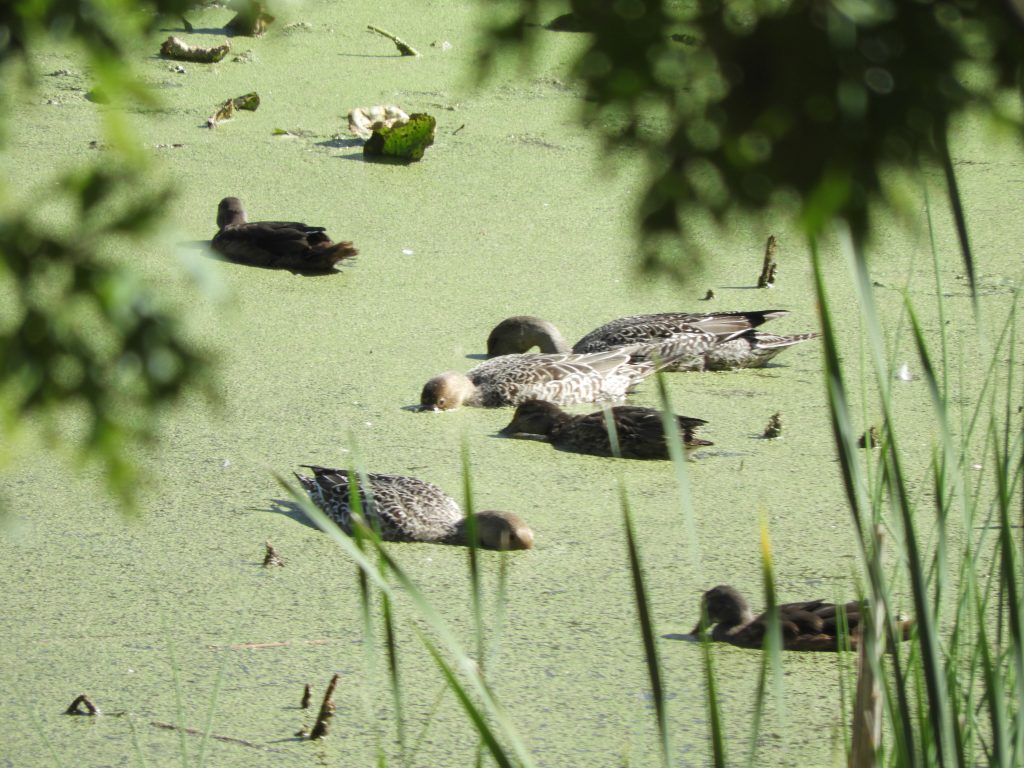
Neither the Green–winged Teal nor the Northern Pintails breed around here, not in any numbers anyway, so I think they must have just arrived, they may linger for a very few days.